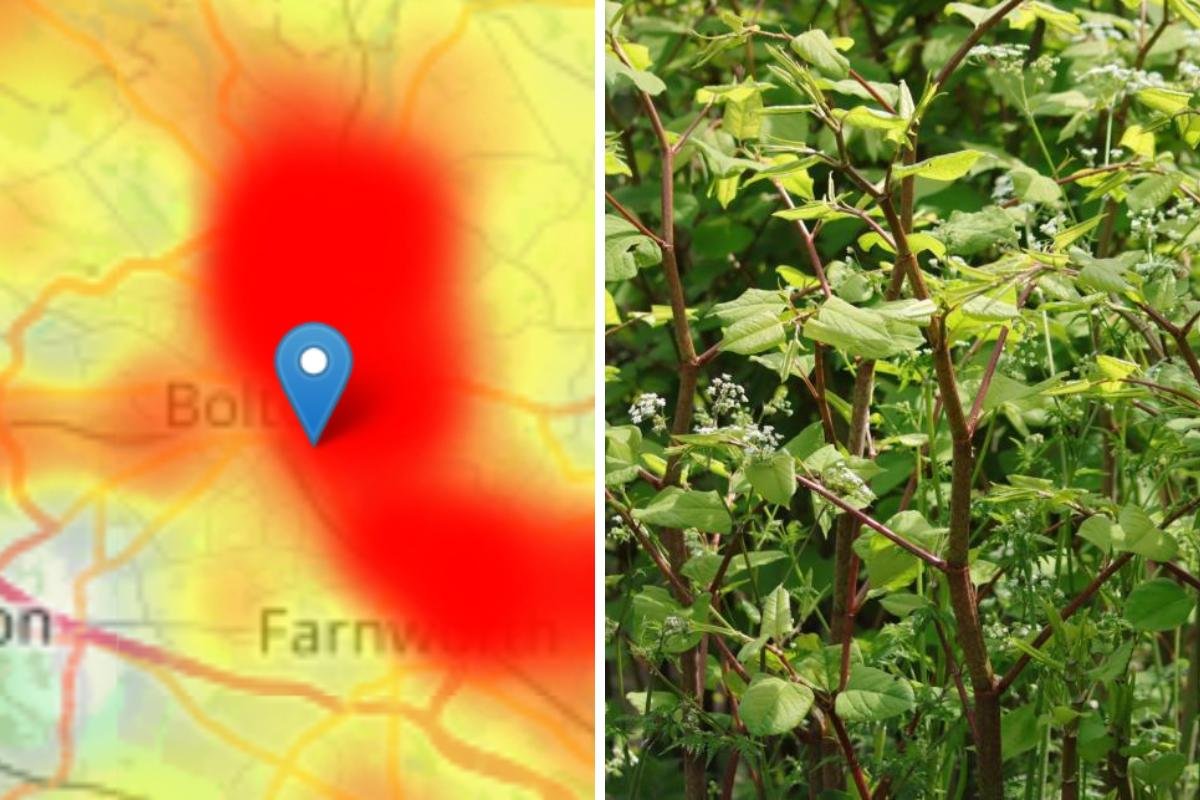Hundreds of a plant which can cause issues with mortgage applications are present in Bolton, according to an industry expert.
Japanese Knotweed is an invasive species which can cause damage to infrastructure and can affect buying and selling properties.
The species was originally brought to the UK as an ornamental garden plant but, due to its ability to damage is now subject to legal control measures.
Invasive plant specialists, Environet, has an online heat map which plots sightings of Japanese Knotweed in the country.
It shows that, in a 4km area around the north east of Bolton, there has been 641 sightings of the plant.
In another 4km area on the western side of Bolton, there have been a further 494 sightings.
It shows there being a further 375 in the Farnworth area.
Japanese Knotweed (Image: Getty Images) The Royal Horticultural Society (RHS) says that it can cause damage to hard surfaces, exploiting cracks and joints in paving, tarmac and asphalt, resulting in uneven surfaces.
Japanese Knotweed can alter and degrade the banks of watercourses, which can contribute to erosion and increase the likelihood of flooding.
It can also outcompete native plants for space, light, moisture and nutrients.
Read more: Why Japanese Knotweed is a problem and what to do if you find some
Read more: Bolton train passengers greeted with green new station makeover
Read more: ‘Do we actually know what we own?’ Council website wrongly lists land it owns
The RHS describes Japanese Knotweed as “rounded pink buds” that form at ground level in spring, before “reddish-purple shoots” emerge.
They then become stems, before what start as small red leaves become green.
The heat map for Bolton (Image: Environet) The plant can cause issues when buying and selling property.
The RHS says: “Since 2013, a seller is required to state whether Japanese knotweed is present on their property through a TA6 form – the property information form used for conveyancing.
“If you are selling, it is your responsibility to check the garden for Japanese knotweed (bearing in mind it dies back in winter).
“The TA6 form asks you to confirm whether your property is affected by Japanese knotweed, where it is, and to provide a management plan for its eradication.
“If you are buying, the presence of Japanese knotweed will be stated in the responses to the TA6 form. This often results in your mortgage lender requiring assurances that it will be eradicated before agreeing the funds.
“A management plan by a professional eradication company, backed by a transferable guarantee, is usually sufficient. It is most common for this plan to be provided by the seller before the purchase is completed.”
It adds: “Whether buying or selling, it is worth being proactive and checking the property for Japanese knotweed.
“Disputes over the identity of a plant, the failure to disclose its presence, or the lack of a management plan can result in delays, increased costs later in the buying process, or even a possible misrepresentation claim after the sale, so this approach helps to avoid problems.”




